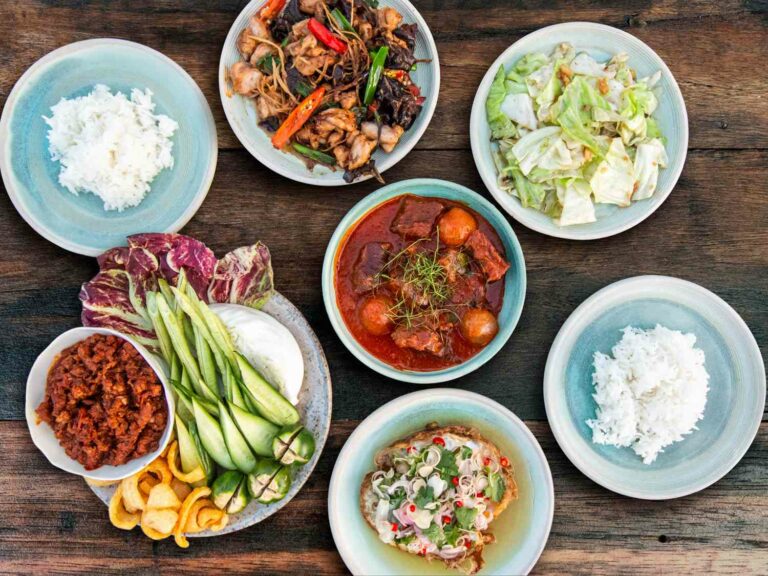Introduction: Thai cuisine
Thai cuisine is a vibrant and flavorful cuisine that is known for its bold spices, combination of sweet, sour, spicy, and salty flavors, and its use of fresh herbs and vegetables. It is a cuisine that is deeply rooted in Thai culture and history, and is beloved both in Thailand and around the world.
Key flavors and spices in Thai cuisine
One of the defining characteristics of Thai cuisine is its use of a wide variety of spices and herbs to create bold and complex flavors. Key spices and herbs used in Thai cooking include lemongrass, galangal, kaffir lime leaves, Thai basil, cilantro, and chili peppers. Fish sauce and shrimp paste are also widely used to add umami flavor to dishes. Thai cuisine is known for its balance of sweet, sour, spicy, and salty flavors, which are often blended together in dishes such as tom yum soup, pad Thai, and green curry.
Popular Thai dishes and their ingredients
There are many popular Thai dishes that are enjoyed both in Thailand and around the world. Pad Thai, a stir-fried noodle dish, is one of the most well-known Thai dishes, and typically includes ingredients such as rice noodles, shrimp, eggs, bean sprouts, and peanuts. Tom yum soup, a sour and spicy soup, is another popular dish that often includes ingredients such as lemongrass, galangal, kaffir lime leaves, chili peppers, and shrimp or chicken. Green curry, a creamy and spicy curry made with coconut milk, green chili peppers, Thai basil, and other herbs and spices, is also a popular Thai dish.
Influence of geography and culture on Thai cuisine
Thai cuisine has been influenced by a wide range of factors, including geography, culture, and history. Thailand’s location in Southeast Asia has led to the incorporation of many spices and ingredients from neighboring countries such as Vietnam, Cambodia, and Malaysia. Thai cuisine has also been influenced by the country’s long history of trade with China, India, and other countries, which has led to the incorporation of ingredients such as coriander, cumin, and cardamom into Thai dishes.
Importance of balance and harmony in Thai dishes
One of the key principles of Thai cuisine is the importance of balance and harmony in dishes. Thai chefs strive to create a perfect balance of sweet, sour, spicy, and salty flavors, and to ensure that each ingredient in a dish harmonizes with the others. This emphasis on balance and harmony extends to the presentation of dishes, which are often beautifully arranged and garnished with fresh herbs and vegetables.
Conclusion: Thai cuisine’s global impact and popularity
Thai cuisine has become increasingly popular around the world in recent years, thanks in part to the efforts of Thai chefs and restaurateurs to promote the cuisine internationally. Thai restaurants can now be found in cities around the world, from New York to London to Tokyo. The popularity of Thai cuisine is a testament to the delicious flavors and bold spices that are at the heart of Thai cooking, as well as to the country’s rich cultural heritage and culinary traditions.

